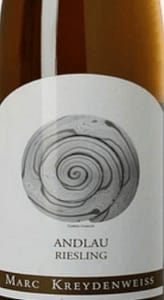Nobody talked about the rolling, undulating landscape of Itata, the place where the original Chilean vineyard is believed to have been located (near port city Concepción, south of Maule and north of Bio Bio, both more well-known areas). But the earthquake of 2010 can stand as a metaphor for the country’s new path in wine, because when tidying up one have to look upon what has been at the same time as scheduling a future. And while much of the work had started before, many projects began to come to the surface around that time.

In addition to the rediscovering of the Itata region the use of clay vessels is also experiencing a revival. The De Martino family has been influencial in moving away from standardising practises in winemaking, like harvesting too ripe, using herbicides, over-extraction, new oak barrels, enzymes, cultured yeasts and micro-oxygenation – and yes, bringing the clay vessels back to the spotlight.
The tinajas arrived in Chile with the Spanish conquerors. However, as the historians note, the craftmanship involved also had lines back to the ceramic traditions of the continent’s native inhabitants. There is a theory that alcohol was stored in tinajas in Chile 3.500 years back in time. (Read more here. As for clay vessels, there are a lot on this blog, most notably in this piece about tinajero Padilla in Castilla-La Mancha.)
 Tinajas in De Martino’s cellar
Tinajas in De Martino’s cellar
The first version in De Martino’s Viejas Tinajas series was the Cinsault, a very early classic in Chilean vinegrowing. It’s what one would call “dry-farmed”, a practise that is possible in certain areas with a heavy rainfall in winter and a soil with the ability to keep the water during the rest of the year.
 The second tinaja wine was a dark orange, almost brownish wine made from muscat. Here excellently paired with a Lancashire Bomb, an English cow’s milk cheese
The second tinaja wine was a dark orange, almost brownish wine made from muscat. Here excellently paired with a Lancashire Bomb, an English cow’s milk cheese
Cinsault is a grape with fairly light skin and naturally low tannin and acidity. Most well-known are the lightly perfumed reds and the rosés. But with old vines and low yields it’s possible to get more flavour, often with a touch of flowery and strawberry aromas on top. As it’s able to withstand drought very well it has become popular, not only in its stronghold in Southern France, but also many places outside Europe, like North Africa, the Middle East, and in South Africa it’s famous for being one parent of pinotage, something of a “national grape” there.
This particular wine is made 280 meters above sea level, 22 kilometers from the Pacific, from ungrafted vines, hand-harvested, spontaneously fermented, and the must is aged for 8 months in 200 year old tinajas (big clay vessels without handles).

Viejas Tinajas Cinsault 2014 (De Martino)
Cherry red. Smells of quite mature red berries (raspberry, strawberry), somewhat earthy with some white pepper. It’s well-structured with a tannic edge, and also shows a cool, fruity, somewhat graphity taste, and a good length.
Price: Medium
Food: Beef and other tasty meats, possibly with creamy sauces






 Vicuña, eh… Well, here is one
Vicuña, eh… Well, here is one









 The second tinaja wine was a dark orange, almost brownish wine made from muscat. Here excellently paired with a Lancashire Bomb, an English cow’s milk cheese
The second tinaja wine was a dark orange, almost brownish wine made from muscat. Here excellently paired with a Lancashire Bomb, an English cow’s milk cheese
